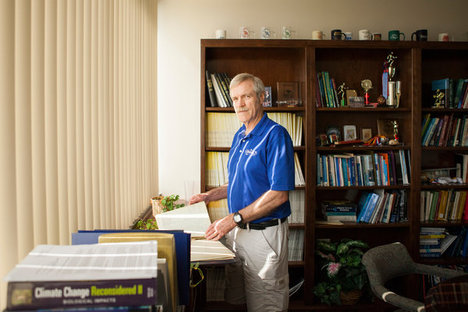(p. A11) What’s in a name?
A lot, if the name is genetically modified organism, or G.M.O., which many people are dead set against. But what if scientists used the precise techniques of today’s molecular biology to give back to plants genes that had long ago been bred out of them? And what if that process were called “rewilding?”
That is the idea being floated by a group at the University of Copenhagen, which is proposing the name for the process that would result if scientists took a gene or two from an ancient plant variety and melded it with more modern species to promote greater resistant to drought, for example.
“I consider this something worth discussing,” said Michael B. Palmgren, a plant biologist at the Danish university who headed a group, including scientists, ethicists and lawyers, that is funded by the university and the Danish National Research Foundation.
They pondered the problem of fragile plants in organic farming, came up with the rewilding idea, and published their proposal Thursday in the journal Trends in Plant Science.
. . .
The idea of restoring long-lost genes to plants is not new, said Julian I. Schroeder, a plant researcher at the University of California, Davis. But, wary of the taint of genetic engineering, scientists have used traditional breeding methods to cross modern plants with ancient ones until they have the gene they want in a crop plant that needs it. The tedious process inevitably drags other genes along with the one that is targeted. But the older process is “natural,” Dr. Schroeder said.
. . .
Researchers have previously crossbred wheat plants with traits found in ancient varieties, noted Maarten Van Ginkel, who headed such a program in Mexico at the International Maize and Wheat Improvement Center.
“We selected for disease resistance, drought tolerance,” he said. “This method works but it has drawbacks. You prefer to move only the genes you want.”
When Dr. Van Ginkel crossbred for traits, he did not look for the specific genes conferring those traits. But with the flood-resistant rice plants, researchers knew exactly which gene they wanted. Nonetheless, they crossbred and did not use precision breeding to alter the plants.
Asked why not, Dr. Schroeder had a simple answer — a complex maze of regulations governing genetically engineered crops. With crossbreeding, he said, “the first varieties hit the fields in a couple of years.”
And if the researchers had used precision breeding to get the gene into the rice?
“They would still be stuck in the regulatory process,” Dr. Schroeder said.
For the full story, see:
GINA KOLATA. “A Proposal to Modify Plants Gives G.M.O. Debate New Life.” The Wall Street Journal (Fri., MAY 29, 2015): A11.
(Note: ellipses added.)
(Note: the online version of the story has the date MAY 28, 2015.)

